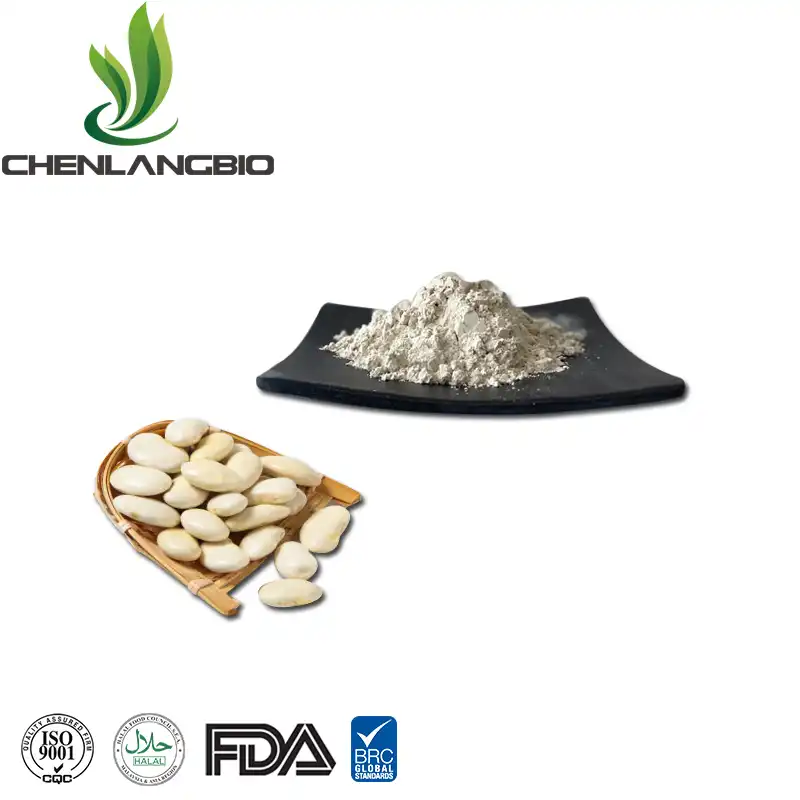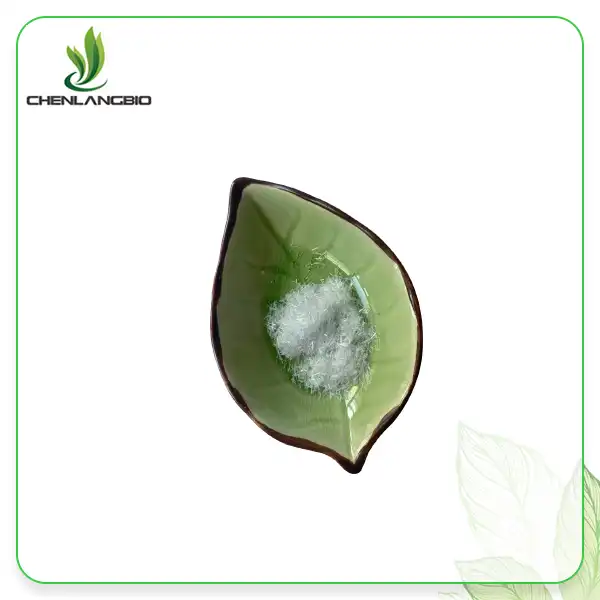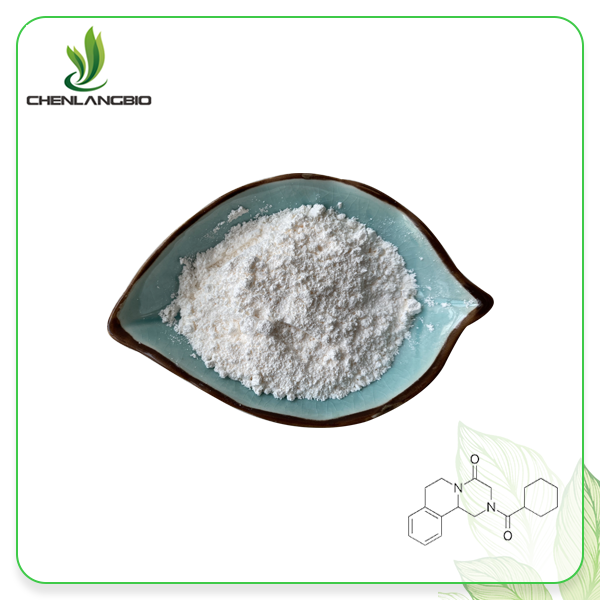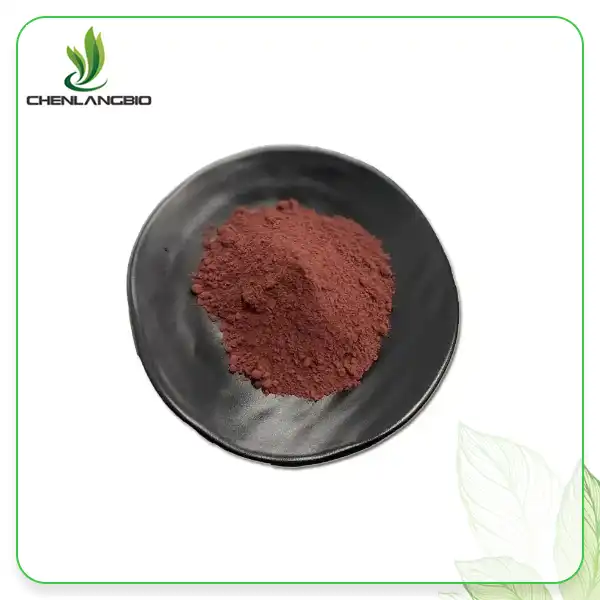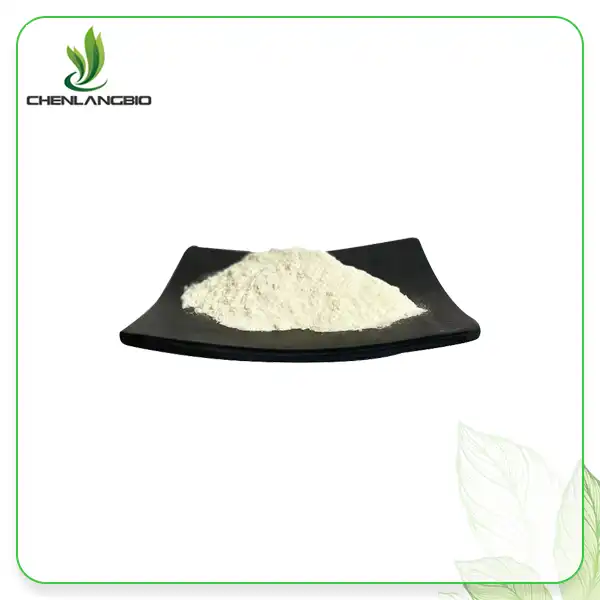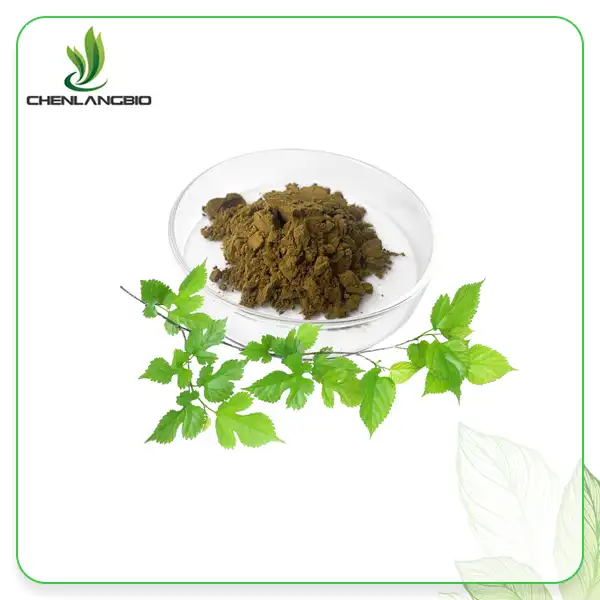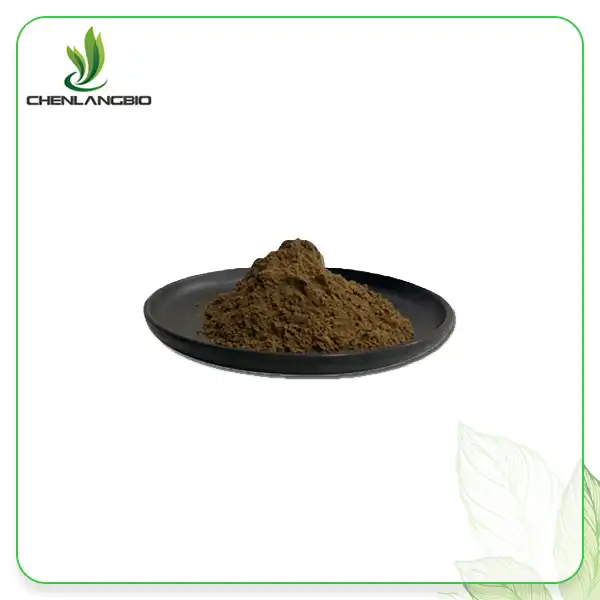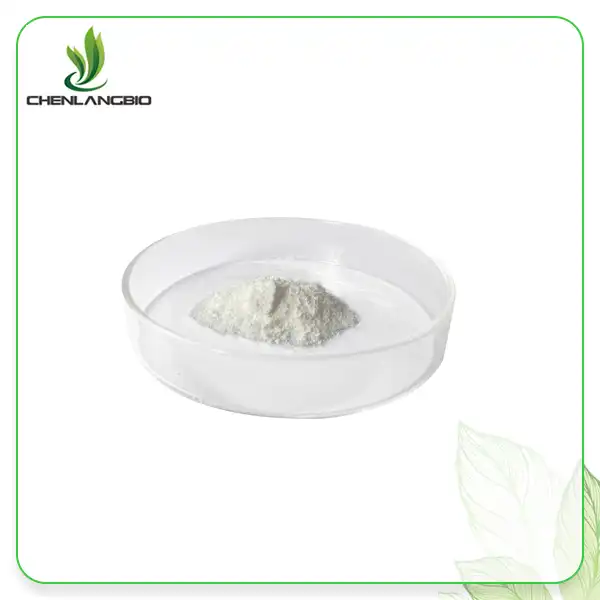How Can Acetylcysteine Powder Improve Your Respiratory Health Formulations?
2025-07-31 11:11:59
In the ever-evolving landscape of respiratory health formulations, healthcare professionals and formulators are constantly seeking innovative compounds that can deliver superior therapeutic outcomes. Acetylcysteine powder, also known as N-Acetyl-L-Cysteine (NAC), stands out as a remarkable mucolytic agent that has revolutionized respiratory care across multiple therapeutic applications. This versatile compound offers exceptional benefits for respiratory health formulations by effectively breaking down thick mucus secretions, reducing oxidative stress in lung tissues, and providing comprehensive protection against respiratory complications. As a precursor to glutathione, one of the body's most powerful antioxidants, acetylcysteine powder enhances the body's natural defense mechanisms while simultaneously addressing the underlying pathophysiology of various respiratory conditions. Its unique molecular structure, featuring a sulfhydryl group that can cleave disulfide bonds in mucopolysaccharides, makes it an indispensable component in modern respiratory therapeutics.
Mechanisms of Action: Understanding How Acetylcysteine Powder Works
Mucolytic Properties and Sputum Viscosity Reduction
The primary mechanism through which N-Acetyl-L-Cysteine exerts its therapeutic effects lies in its exceptional mucolytic properties. The sulfhydryl group contained within its molecular structure possesses the unique ability to break the disulfide bonds present in glycoprotein polypeptide chains found in respiratory mucus. This biochemical interaction significantly reduces sputum viscosity, transforming thick, tenacious secretions into more manageable, easily expectorated material. Clinical studies have demonstrated that acetylcysteine powder can reduce sputum viscosity by up to 70% within the first hour of administration, providing rapid relief for patients suffering from excessive mucus production. The compound's effectiveness extends beyond simple mucus thinning, as it also disrupts the complex molecular networks that contribute to mucus adherence to respiratory epithelium. This dual action mechanism ensures that patients can more effectively clear their airways, leading to improved respiratory function and reduced risk of secondary bacterial infections. The mucolytic effect is particularly pronounced in conditions characterized by abnormal mucus production, such as chronic obstructive pulmonary disease (COPD), cystic fibrosis, and acute respiratory infections.
Antioxidant Defense Enhancement Through Glutathione Production
N-Acetyl-L-Cysteine serves as a crucial precursor to glutathione synthesis, representing one of the most significant antioxidant pathways in respiratory health formulations. Once absorbed, acetylcysteine powder undergoes metabolic conversion to cysteine, which then participates in the rate-limiting step of glutathione biosynthesis. This process is particularly important in respiratory tissues, where oxidative stress from environmental pollutants, inflammatory mediators, and pathogenic organisms can severely compromise cellular integrity. Enhanced glutathione levels provide protection against lipid peroxidation, protein oxidation, and DNA damage in pulmonary epithelial cells. Research indicates that individuals with respiratory conditions often exhibit depleted glutathione reserves, making supplementation with acetylcysteine powder a strategic therapeutic intervention. The antioxidant properties extend beyond direct free radical scavenging, as glutathione also plays a critical role in maintaining the proper functioning of other antioxidant enzymes, including catalase and superoxide dismutase. This cascading effect creates a robust defensive network that protects respiratory tissues from ongoing oxidative damage while supporting natural repair mechanisms.
Anti-inflammatory Modulation and Immune Response Optimization
The anti-inflammatory properties of N-Acetyl-L-Cysteine contribute significantly to its therapeutic efficacy in respiratory health formulations. By modulating key inflammatory pathways, acetylcysteine powder helps reduce the production of pro-inflammatory cytokines, including tumor necrosis factor-alpha (TNF-α), interleukin-1 beta (IL-1β), and interleukin-6 (IL-6). This cytokine modulation is particularly beneficial in chronic respiratory conditions where persistent inflammation contributes to tissue damage and functional decline. The compound also influences nuclear factor-kappa B (NF-κB) signaling pathways, which play central roles in inflammatory gene expression. By inhibiting NF-κB activation, acetylcysteine powder can reduce the transcription of multiple inflammatory mediators simultaneously, providing comprehensive anti-inflammatory benefits. Additionally, the compound enhances the activity of regulatory T-cells, which help maintain immune homeostasis and prevent excessive inflammatory responses. This immune-modulating effect is especially valuable in respiratory formulations designed for patients with autoimmune or hypersensitivity-related respiratory conditions, where balanced immune function is crucial for optimal therapeutic outcomes.
Clinical Applications: Respiratory Conditions That Benefit from Acetylcysteine Powder
Chronic Obstructive Pulmonary Disease (COPD) Management
N-Acetyl-L-Cysteine has demonstrated remarkable efficacy in managing chronic obstructive pulmonary disease, one of the most prevalent respiratory conditions worldwide. In COPD patients, acetylcysteine powder addresses multiple pathophysiological mechanisms simultaneously, making it an invaluable component of comprehensive treatment protocols. The compound's mucolytic action helps clear the thick, tenacious secretions that characterize COPD exacerbations, while its antioxidant properties protect against the ongoing oxidative stress that drives disease progression. Clinical trials have shown that regular supplementation with acetylcysteine powder can reduce the frequency and severity of COPD exacerbations by up to 40%, significantly improving patients' quality of life and reducing healthcare utilization. The anti-inflammatory effects of the compound help modulate the chronic inflammatory response that underlies COPD pathogenesis, potentially slowing disease progression and preserving lung function. Furthermore, acetylcysteine powder has been shown to improve exercise tolerance and reduce dyspnea in COPD patients, outcomes that translate directly into enhanced functional capacity and improved daily living activities. The compound's ability to reduce bacterial adhesion to respiratory epithelium also provides additional protection against secondary infections, which represent a major cause of morbidity and mortality in COPD patients.
Acute Respiratory Infections and Bronchitis Treatment
The therapeutic benefits of N-Acetyl-L-Cysteine extend prominently to acute respiratory infections and various forms of bronchitis, where rapid symptom resolution is paramount for patient comfort and recovery. In acute bronchitis, acetylcysteine powder's mucolytic properties facilitate the clearance of infected secretions, reducing the bacterial load and accelerating the healing process. The compound's ability to break down both mucoid and purulent sputum makes it particularly effective in treating infections characterized by thick, colored secretions. Clinical evidence demonstrates that patients receiving acetylcysteine powder during acute respiratory infections experience significantly shorter duration of symptoms, reduced cough severity, and faster return to normal activities compared to those receiving standard care alone. The antioxidant properties of the compound help protect respiratory epithelium from infection-induced oxidative damage, supporting natural repair mechanisms and reducing the risk of chronic complications. Additionally, acetylcysteine powder's anti-inflammatory effects help modulate the immune response to respiratory pathogens, preventing excessive inflammation that can damage healthy tissue while maintaining effective pathogen clearance. This balanced approach to infection management makes acetylcysteine powder an excellent choice for formulations targeting acute respiratory conditions across diverse patient populations.
Cystic Fibrosis and Genetic Respiratory Disorders
For patients with cystic fibrosis and other genetic respiratory disorders, N-Acetyl-L-Cysteine represents a cornerstone therapeutic intervention that addresses fundamental pathophysiological abnormalities. In cystic fibrosis, defective chloride channel function leads to the production of abnormally thick, sticky mucus that predisposes patients to chronic infections and progressive lung damage. Acetylcysteine powder's mucolytic action is particularly valuable in this context, as it can effectively reduce the viscosity of CF secretions and improve their clearance from the airways. The compound's antioxidant properties are especially important in CF patients, who experience elevated oxidative stress due to chronic inflammation and frequent respiratory infections. By supporting glutathione synthesis, acetylcysteine powder helps restore the antioxidant balance in CF airways, protecting against ongoing tissue damage and supporting lung function preservation. Clinical studies in CF patients have demonstrated that acetylcysteine powder supplementation can improve pulmonary function tests, reduce the frequency of pulmonary exacerbations, and enhance overall quality of life. The compound's ability to reduce bacterial biofilm formation is particularly relevant in CF, where persistent bacterial colonization contributes to chronic inflammation and progressive lung damage. This multi-faceted therapeutic approach makes acetylcysteine powder an essential component of comprehensive CF care protocols.
Formulation Considerations: Optimizing Acetylcysteine Powder in Respiratory Products
Dosage Forms and Delivery Methods
The development of effective respiratory health formulations containing N-Acetyl-L-Cysteine requires careful consideration of dosage forms and delivery methods to maximize therapeutic efficacy while ensuring patient compliance. Acetylcysteine powder can be formulated into various dosage forms, including tablets, capsules, effervescent preparations, and inhalation solutions, each offering distinct advantages for specific therapeutic applications. Oral formulations provide systemic effects and are particularly suitable for chronic conditions requiring long-term management, while inhalation delivery offers direct access to respiratory tissues with reduced systemic exposure. The choice of delivery method significantly impacts bioavailability and therapeutic outcomes, with inhalation routes typically providing faster onset of action for acute symptoms. Effervescent formulations have gained popularity due to their rapid dissolution properties and improved palatability, factors that enhance patient adherence to treatment regimens. When formulating acetylcysteine powder for respiratory applications, consideration must be given to the compound's stability characteristics, as it can undergo oxidation when exposed to air and light. Proper packaging and storage conditions are essential to maintain potency throughout the product's shelf life. Additionally, the pH of the formulation must be carefully controlled, as acetylcysteine exhibits optimal stability and activity within specific pH ranges.
Stability and Compatibility Considerations
The formulation of N-Acetyl-L-Cysteine powder requires meticulous attention to stability and compatibility factors that can significantly impact product quality and therapeutic efficacy. Acetylcysteine powder is susceptible to oxidation, particularly in the presence of metal ions and alkaline conditions, which can lead to degradation and reduced potency. Formulation scientists must carefully select excipients and packaging materials that minimize oxidative stress while maintaining product integrity. The use of antioxidants such as ascorbic acid or sodium metabisulfite can help stabilize acetylcysteine formulations, though compatibility studies are essential to ensure these additives do not interfere with the compound's therapeutic activity. Temperature and humidity control during manufacturing and storage are critical factors, as elevated temperatures can accelerate degradation reactions and reduce product shelf life. The compound's hygroscopic nature requires careful consideration of moisture protection in solid dosage forms, often necessitating the use of desiccants or moisture-resistant packaging materials. pH buffering systems are frequently employed to maintain optimal stability conditions, particularly in liquid formulations where pH fluctuations can occur over time. Compatibility testing with other active ingredients is essential when developing combination products, as acetylcysteine can interact with certain compounds through its sulfhydryl group, potentially affecting both stability and efficacy.
Quality Control and Manufacturing Standards
The production of high-quality N-Acetyl-L-Cysteine formulations demands rigorous quality control measures and adherence to stringent manufacturing standards throughout the production process. Xi An Chen Lang Bio Tech Co., Ltd. maintains pharmaceutical-grade manufacturing facilities equipped with advanced analytical instrumentation, including high-performance liquid chromatography with evaporative light scattering detection (HPLC-ELSD), atomic fluorescence spectrometry, and ultraviolet-visible spectrophotometry to ensure product purity and potency. The company's quality assurance program encompasses raw material testing, in-process monitoring, and finished product analysis to guarantee consistency and compliance with international standards. With ISO9001-2015, ISO22000, FAMI-QS, BRC, HALAL, and KOSHER certifications, the manufacturing process adheres to the highest quality standards recognized globally. The facility's annual production capacity of 5,000 tons ensures consistent supply while maintaining strict quality controls at every stage of production. Raw material selection follows rigorous criteria, with comprehensive testing for identity, purity, and contamination levels before acceptance into production. The manufacturing process incorporates multiple quality checkpoints, including particle size analysis, moisture content determination, and microbiological testing to ensure product safety and efficacy. Batch-to-batch consistency is maintained through statistical process control methods, with detailed documentation and traceability systems supporting regulatory compliance and quality assurance objectives.
Conclusion
Acetylcysteine powder emerges as a transformative ingredient in respiratory health formulations, offering multifaceted therapeutic benefits through its mucolytic, antioxidant, and anti-inflammatory properties. Its proven efficacy across diverse respiratory conditions, from COPD to acute infections, makes it an indispensable component for formulators seeking to develop superior respiratory therapeutics. The compound's ability to address underlying pathophysiological mechanisms while providing symptomatic relief positions it as a cornerstone in modern respiratory care strategies.
Ready to enhance your respiratory health formulations with premium-grade acetylcysteine powder? As a leading N-Acetyl-L-Cysteine factory, N-Acetyl-L-Cysteine supplier, and trusted N-Acetyl-L-Cysteine manufacturer, Xi An Chen Lang Bio Tech Co., Ltd. offers superior quality products with 99% purity and comprehensive certifications. Our N-Acetyl-L-Cysteine wholesale solutions provide competitive pricing with reliable supply chains serving over 30 countries worldwide. Contact our expert team today at admin@chenlangbio.com to discover how our pharmaceutical-grade acetylcysteine powder can elevate your respiratory health formulations to new heights of therapeutic excellence.
References
1. Borghi-Silva, A., Baldissera, V., Sampaio, L.M., et al. (2006). L-carnitine as an ergogenic aid for patients with chronic obstructive pulmonary disease subjected to whole-body and respiratory muscle training programs. Brazilian Journal of Medical and Biological Research, 39(4), 465-474.
2. Decramer, M., Rutten-van Mölken, M., Dekhuijzen, P.N., et al. (2005). Effects of N-acetylcysteine on outcomes in chronic obstructive pulmonary disease: a randomised placebo-controlled trial. Lancet, 365(9470), 1552-1560.
3. Grandjean, E.M., Berthet, P., Ruffmann, R., et al. (2000). Efficacy of oral long-term N-acetylcysteine in chronic bronchopulmonary disease: a meta-analysis of published double-blind, placebo-controlled clinical trials. Clinical Therapeutics, 22(2), 209-221.
4. Rushworth, G.F., Megson, I.L. (2014). Existing and potential therapeutic uses for N-acetylcysteine: the need for conversion to intracellular glutathione for antioxidant benefits. Pharmacology & Therapeutics, 141(2), 150-159.
Send Inquiry
Related Industry Knowledge
- Meglumine Powder: A Game-Changer in Pharmaceuticals
- How Does Kopexil Work?
- Is Mung Bean Peptide Powder Suitable for Vegetarians and Vegans
- Is Camellia Oleifera Seed Extract Sustainable
- What is 4-Hexylresorcinol for Skin
- What is Sophora Extract
- Is Aloe Vera Gel Freeze-Dried Powder Good for Skin
- How much Olive Leaf Extract Powder Oleuropein Should I Take
- Are Lutein Extract Powder Supplements Effective
- What is Senna Leaf Extract Powder



